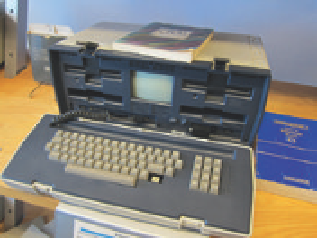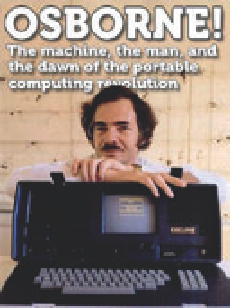Information Technology Reference
In-Depth Information
convincingly executed. When Kay's team was demonstrating their system to their skeptical engineering
colleagues, Ingalls stunned the audience by using a mouse click to call up a drop-down menu listing several
possible commands and selecting the “cut” command. As Hiltzik says:
The PARC user interface, with its overlapping windows, mouse clicks, and pop-up menus, had entered comput-
ing history. More than twenty-five years and many engineering generations later, it remains the indisputable
parent of the desktop metaphor guiding the users of millions of home and office computers.
44
Bob Taylor's leadership was the key ingredient in PARC's astonishing success. According to Butler Lampson:
The master often speaks in somewhat inscrutable fashion with a deeper and more profound interpretation
than his humble disciples are able to provide. In retrospect you can really see that the path has been plotted
years in advance, and you've been following his footsteps all along.
45
Chuck Thacker agreed: “As a leader of engineers and scientists he had no equal. If you're looking for the
magic, it was him.”
46
The Osborne portable computer
At the beginning of the 1980s, many small companies were entering the personal computer market
with creative ideas. In July 1981, a British computer designer named Adam Osborne (
B.8.18
) launched a por-
table personal computer that became a big success with traveling business executives. One of the advantages
was that it was designed like a briefcase that could it under the airplane seat. The computer was based on
the popular Z80 microprocessor designed by Federico Faggin, who had designed the first Intel microproces-
sor back in 1971. The Osborne 1 (
Fig. 8.25
) had two floppy disk drives; 64 kilobytes of memory; a five-inch,
fifty-two-column scrollable display; and a modem connection that could send and receive data by telephone.
The reason for the small display
was portability: a larger display
could be easily damaged during
transportation. The Osborne 1 ran
the CP/M operating system and
its bundled software included a
BASIC interpreter, the Word-Star
word processing software, and a
SuperCalc spreadsheet program.
The price of the computer was
very attractive and generated
a huge demand. The Osborne
Computer Corporation grew from
two employees to three thou-
sand within a year. However,
Osborne Computer made some
critical mistakes that caused its
sudden decline in a fiercely com-
petitive market. The company
declared bankruptcy in 1983.
Adam Osborne described the rea-
sons for this demise in his topic
Hypergrowth: The Rise and Fall of
Osborne Computer Corporation
.
Fig. 8.25. The first “Portable
Computer” - the Osborne 1 - was
released in 1981. It weighed 24.5 pounds
(12 kg) and cost US$1795 - just more
than half the cost of a computer from
other manufacturers with comparable
features - and ran the CP/M operating
system. It was designed to it under an
airline seat. At its peak, the Osborne
Computer Corporation was shipping ten
thousand units per month.
B.8.18. Adam Osborne (1939-2003) was
best known for creating the first com-
mercially available portable computer,
the Osborne 1, released in April 1981.
The Osborne 1 included both word
processing and spreadsheet software and
the company was briefly very successful.
The Osborne 1 was produced at a time
when IBM did not bundle hardware and
software with their PCs: customers had
to buy the operating system software
and the monitor separately.



Search WWH ::

Custom Search